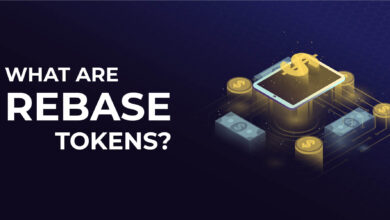CBDCs vs. Digital Wallets

The digital age is transforming how we manage our money. As cash slowly fades, two innovative solutions are emerging: Central Bank Digital Currencies (CBDCs) and digital wallets. But what exactly are they, and how do they differ? Buckle up, because we’re diving into the world of digital currency!
CBDC vs. Digital Wallets
| Features | CBDC | Digital Wallets |
| Issuer | Central Bank | Varies |
| Asset Type | Digital Fiat | Various Digital Assets |
| Banking | Government | None |
| Legal Tender | Potential | No |
| Purpose | Digital Cash | Management & Transactions |
| Functionality | Programmable | Storage and Management |
| Regulation | Strict | Varies |
| Technology | Blockchain (Possible) | Mobile Apps, Web Platforms |
| Acceptance | Jurisdictional | Provider & Merchant Dependent |
Detailed Comparison
Introduction to CBDCs and Digital Wallets
Imagine your money existing only in the digital realm. That’s the core concept of CBDCs. They’re essentially digital versions of a country’s fiat currency, issued and controlled by its central bank. Think of them as the digital equivalent of the coins and bills in your pocket but with the potential for programmable features and enhanced security.
Digital wallets, on the other hand, are software applications that act as a secure haven for your various digital assets. This could include cryptocurrencies, credit cards, loyalty points, and even boarding passes. They’re like your physical wallet, but for the digital era, offering convenience and organization for managing your financial life on the go.
The rise of digital currencies is fueled by our growing reliance on online transactions. Traditional payment systems are evolving to keep pace, with CBDCs and digital wallets playing a significant role in this transformation.
Purpose and Functionality
- CBDCs serve a clear purpose: to provide a secure and central-bank-backed digital form of cash. This could potentially streamline government payments, improve financial inclusion, and even combat money laundering.
- Digital wallets, however, have a broader range of functionalities. They allow you to store and manage various digital assets in one place. You can use them to make online payments, access loyalty programs, and even store digital tickets.
Issuer and Regulation
- CBDCs are strictly government-controlled. The central bank of a country issues and regulates them, ensuring their stability and value. Think of it as the Federal Reserve being responsible for both printing physical dollars and creating digital dollars.
- Digital wallets, on the other hand, come from a variety of sources. Financial institutions, technology companies, and even third-party service providers can develop and offer digital wallets. The regulations governing them will depend on the specific wallet provider and the types of assets they handle.
Technology and Infrastructure
- CBDCs might leverage blockchain technology or other distributed ledger technologies (DLT) to ensure secure and transparent transactions. Building the infrastructure for CBDCs will require collaboration between central banks, technology companies, and financial institutions.
- Digital wallets utilize a range of technologies, including mobile apps, web platforms, and even hardware devices like secure chips. These wallets integrate with existing payment networks, allowing for seamless online and in-store transactions.
Legal Tender and Acceptance
- CBDCs, if adopted as legal tender, would be recognized as official currency within a specific jurisdiction. This means you could use them for payments and transactions just like physical cash. However, their global acceptance will depend on individual countries’ policies and collaborations.
- Digital wallets, however, don’t have inherent legal tender status. Their acceptance depends on the currencies they support and the merchants and service providers who choose to accept them. A wallet containing USDC (a cryptocurrency pegged to the US dollar) might not be accepted everywhere that accepts physical dollars.
Privacy and Security
- Privacy is a major concern with CBDCs. Some worry about central banks having access to citizens’ spending habits, potentially raising concerns about government surveillance. Security is also crucial. Robust measures are needed to prevent hacking and ensure the integrity of the digital currency system.
- Digital wallets also need robust security features. Encryption, multi-factor authentication, and biometric authentication are all crucial tools employed by wallet providers to safeguard user funds and personal information. Choosing a reputable wallet provider with strong security practices is essential.
Impact on Financial Inclusion and Accessibility
- CBDCs have the potential to promote financial inclusion, especially for those without access to traditional banking services. By offering a government-backed digital currency, CBDCs could make financial services more accessible to underserved communities.
- Digital wallets can also play a role in expanding financial access. They can enable individuals without traditional bank accounts to make digital payments and participate in the digital economy.
Future Outlook and Adoption
- CBDCs are still in their early stages of development. Several countries are conducting pilot projects to explore their feasibility and potential benefits. Regulatory frameworks and global collaboration will be key factors influencing their future adoption.
- Digital wallets, however, are already widely used. As mobile payment adoption continues to grow and technology advances, we can expect even more sophisticated and user-friendly digital wallets to emerge.
Considerations for Consumers and Businesses
- Choosing between CBDCs and digital wallets depends on your specific needs. Security, convenience, cost, and regulatory compliance are all factors to consider.
- For consumers, digital wallets offer a versatile and convenient way to manage various digital assets. Businesses, on the other hand, CBDCs could potentially offer faster and cheaper settlement times compared to traditional payment systems. However, businesses will need to adapt their infrastructure and processes to integrate CBDCs.
Conclusion
CBDCs and digital wallets represent distinct, yet complementary, innovations in the digital currency landscape. CBDCs offer a central-bank-backed digital form of cash, while digital wallets provide a convenient and versatile platform for managing a wider range of financial assets.
As the digital economy continues to evolve, both CBDCs and digital wallets have the potential to revolutionize how we pay, invest, and interact with our finances. The future of money is likely to be a blend of these technologies, offering greater efficiency, accessibility, and potentially even new possibilities for financial products and services.
Frequently Asked Questions
Is CBDC superior to UPI? The possibility of lowering credit risk and liquidity concentration in payment systems is provided by CBDC. In contrast, UPI is a payment mechanism that allows instantaneous transfers of funds between two bank accounts via a mobile device.
Can you use CBDC offline? Key messages. The digital counterpart of bank notes is an offline central bank digital currency, or CBDC. When internet access is available, it permits online purchases while also facilitating transactions without it. The length of the offline period determines how an offline CBDC is designed.





